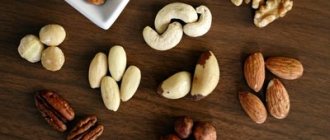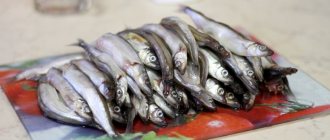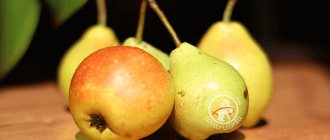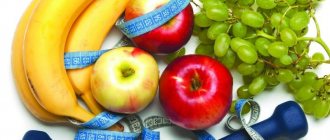When it comes to sweets, never say never! Even candy can be healthy - in moderation. For many people, the scariest part of starting a new, healthier way of eating is the idea of giving up your favorite sweets forever! And that's a fact.
If you're a cookie and candy lover, don't be discouraged when starting a diet. Sweets can always be part of a healthy lifestyle. That's what nutritionists say. But for the least harm and for complete pleasure, they should be consumed in moderation, and also learn to choose healthy treats. Let's figure out what sweets you can eat on a diet when losing weight only occasionally, and what you can eat at least every day.
Why does the body require sweets?
The meaning of sweet food is more subtle than its taste. It provides a fleeting burst of pleasure, sometimes elusive or bittersweet, like an impossible romance. However, this romance, coupled with unlimited buffets, cheeseburgers, cookies, pies, French fries, chips, barbecue and ice cream, has led to skyrocketing obesity and a near-epidemic of diabetes.
The love of sweets, according to researchers, is not a bad habit, but a biological need.
So why would anyone in their right mind claim that it is okay to eat candy, cakes or pies while on a diet?
Are you on a diet, your goal is to lose weight, but you often crave sweets? This is carbohydrate hunger! You can look into the brain and study how it reacts to sugar to learn how to calm your inner sweet tooth and lose weight.
Some eating habits are better than others, nutritionists say. You must know the consequences before making a choice.
Overeating sugary foods triggers the release of insulin, which leads to stress in the hormonal system and a sharp, tired “crash” in the body. In other words, sweetness may taste good, but the pleasure will come at the cost of health, and the price will be high.
Understand that you will get hungry again, and this will repeat endlessly. Too much denial and too strict abstinence can lead to diet lapses and stress eating.
It takes a week to safely lose 1 kg of weight, and you can regain it in a day. If you constantly stop yourself from eating something, you fall into a stress cycle of hopelessness and start eating foods that you don't need.
Dried fruits
Due to their high fiber content, they help cleanse the intestines. But you can consume no more than 30 grams per day due to their high calorie content. Most preferred dried fruits:
- raisins - calms the nervous system;
- dried apricots - contains a lot of potassium, due to which it has a beneficial effect on the heart;
- prunes - normalizes intestinal function, lowers blood pressure, improves vision;
- figs – rid the intestines of parasites and normalize the activity of the thyroid gland, giving the body energy;
- dates - help with headaches and colds;
- papaya - improves immunity and stimulates metabolism.
How to prevent diet failure and overeating sweets?
If you're craving chocolate, you can indulge yourself. Not in the form of a whole bar, but in the form of chocolate sauce, for example, in which you can dip strawberries or other fruit. If you want candy, take marmalade (containing natural fruit juice and gelatin), not caramel (consisting only of sugar and chemical additives), etc.

The main thing is not to overeat sweets: its excess turns into fat, and this is fraught not only with excess weight, but also with metabolic disorders.
When people are committed to eating healthy, losing weight, or dieting, junk food and sweets are the first to be eliminated from the menu to reduce calories. But this should not be done abruptly, but gradually.
If your family loves a sweet dessert after dinner, this tradition can be continued. Sweets can be included in a balanced diet as long as you control portions and know how to choose healthy treats. You just need to figure out which sweets you can eat while losing weight and which you can’t.
If you learn to control the amount of food you eat, its composition and calorie content, you can satisfy your inner sweet tooth every day.
A person should allow themselves a daily treat, and there is no reason why a 100- or 200-calorie sugary meal can't fit into a diet.
According to experts, sometimes you can afford a special treat containing several hundred calories. But then you must work it off with increased physical activity in order to immediately burn the calories received and prevent them from being deposited as internal fat.

The healthiest sweets are, of course, dried fruits. But among them there are also leaders.
With air greetings!
Are you losing weight, but you can’t give up sweets? There are exceptions to the “don’ts.” Almost ideal sweets are marshmallows and marshmallows. They are made from fruit or berry puree, absolutely without fat, adding only egg whites and sugar. An obvious advantage of such treats is the high content of pectin, which removes harmful substances from the body. In addition, marshmallows and marshmallows reduce irritation of the gastric mucosa, therefore they are useful for diseases of the gastrointestinal tract, especially gastritis.
Article on the topic
Sweet life. Which desserts are waist-friendly? It is better to buy white marshmallows and marshmallows: food coloring is often added to colored ones.
Principles for choosing suitable sweets
Nutrition experts recommend eight ways to choose sweets and treats to include in a balanced diet.
Learn to make healthy choices
It's difficult to constantly count calories. But you need to do this because snacks and sweet treats can be healthy, not just high in calories. It's okay to get 25% of your daily calories from sugary snacks, but make sure they're nutritious. Choose treats or desserts that contain 100-200 kcal and contain vitamins and other valuable substances. For example, marshmallows are a really healthy sweet, because... its base is applesauce.
Read the label on the package, look for beneficial substances in the composition. Choose baked rather than deep-fried chips, low-fat baked goods, dark chocolate, and candies with nuts or dried fruit.
Move on to dessert
All sweet tooths love desserts, and you can indulge in them every day if they are healthy foods. Trust Mother Nature and choose fruit as the base for your desserts. A great example is apples baked with honey.
Fruits are sweet yet nutritious and everyone loves them. Serve fruit, cut into shapes. Or use them to bake angel cake or top low-fat pudding or ice cream. Fruit increases portion size and nutritional value of desserts.

You should eat sweets only in the first half of the day - as a result, all the calories will be burned.
There is nothing wrong with eating a small piece of cake, cookies or candy, which can be very high in calories. The problem is that they are easy to “overdose”, and a small portion is not able to satisfy a sweet tooth. If you have iron willpower and are able to completely control yourself, then you can easily allow yourself such “heavy” sweets once a day in an amount not exceeding 200 Kcal per serving.
Limit variety
Variety is the spice of life, but when it comes to calorie control, fewer choices are better. It has been proven that the more variety of dishes available, the more the appetite is stimulated. Narrow down your food choices in your home to reduce temptation. Make your treats consistent.
- Place your store-bought sweets in bags of 100-200 calories each, one serving for each day.
- Change up your home recipes.
To make your homemade baked goods healthier, replace half the fat in cookies or brownies with applesauce or canola oil. Use bran flour. Add dried fruits and nuts. Replace your favorite sweet dish with a healthy baked oatmeal recipe, any of them are no less nutritious, and the benefits from such a dish are greater than from the same butter bun. When you make your own sweet treat, you can easily cut down on fat, calories, and sugar.
Buy 1 serving of ice cream, cookies and chips
Many sweets are sold by the portion. Buy single servings, and you won’t have to torture yourself with abstaining from the available temptation.
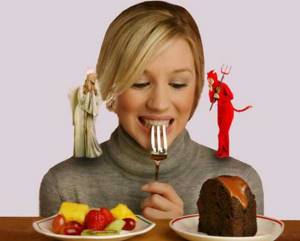
Eat sweets 60 minutes after the main meal - this step will give the body time to absorb the main food.
Don't keep heavy treats at home
Some sweets are too tempting, and it is difficult to control yourself when they are within walking distance. Don't leave treats in the house that will tempt your inner sweet tooth. Too high-calorie sweets can appear in the house only on special occasions.
Freeze your favorite treats
Many products can be stored in the freezer and thus provide a tasty and healthy supply of treats. Try freezing single-serve containers of whipped homemade yogurt, fruit, or 100% fruit juice in small cups to provide a year's worth of summer treats that everyone loves.
Keep plastic bags of frozen fruits and berries on hand. They can be quickly defrosted in the microwave to add fruit filling to ice cream, smoothies, sorbet, or angel cake. An added benefit of cold treats is that they are more enjoyable because they are enjoyed slowly. People do this instinctively to avoid brain freeze. The result is prolonged pleasure.
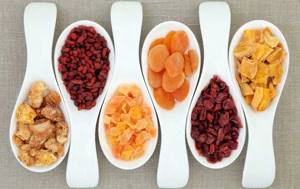
Most dried fruits have a high energy value.
Jelly joys
Another tasty and healthy thing is marmalade. It also does not contain fat, is made on the basis of fruit and berry puree, and agar-agar is added to some varieties: this substance from seaweed extract contains iodine and is beneficial for the thyroid gland and liver.
Which marmalade to prefer - regular (jelly, fruit and berry) or chewing - is a matter of taste, the main thing is to choose a quality one. Be sure to read the packaging to see what it contains! First of all, pay attention to the dyes. Natural ones are carmine, chlorophyllin, curcumin, beta-carotene, etc. But if tartrazine or carmoisine are used, it is better to avoid purchasing: these artificial dyes are strong allergens.
The line “identical to natural flavors” can also be dangerous. If possible, take a look at the pieces of the treat - high-quality marmalade has a dull tint. Bright color most often indicates components of artificial origin.
Ready-made recipes for low-calorie sweets
Now let’s give examples of sweets that can be eaten safely and beneficially for the body during a diet.
- 10-12 baked chips with fruit sauce;
- light popcorn plus a few tablespoons of peanuts;
- whole grain crackers with low-fat cheese;
- a glass of fruit and 1 tablespoon of melted chocolate for dipping;
- 1/2 cup low-fat ice cream or yogurt;
- Angel pie (sponge cake combined with soufflé) with fresh berries;
- fried or dry pineapples, bananas, peaches;
- 6 whole wheat pretzels with 1/4 cup hummus.
It's a harsh reality: sooner or later while on a diet, you'll crave something sweet. Adequate nutritionists understand this, which is why a normal diet program allows “light” desserts (about 150 calories each).
Candied fruit
These small pieces of processed fruit in sugar can be considered dietary. They have a number of beneficial properties due to their fiber, vitamins and minerals content. The most beneficial for weight loss are candied ginger and pineapple. Ginger sweets help lose weight due to the content of phenol-like components that accelerate metabolism. Candied pineapple also promotes weight loss, thanks to plant enzymes that burn fat. You can eat about 40–50 grams per day.
Constant control!
As you can see, there are many diet-friendly options, whether it's satisfying a craving for ice cream, pie, cookies or something chocolatey. But keep two important things in mind when shopping at the grocery store:
- Although many low-fat foods (cakes, cookies or light frozen desserts) contain less fat and are healthier than their full-fat counterparts, they can still contain too many calories. As the fat is removed from these foods, something is added in its place, namely sugar and modified starch. And human fat is formed not from fats supplied with food, but from simple carbohydrates.
- Whatever light dessert you choose, it should be to your taste. Otherwise, you will be tempted to eat something more pleasant, and you are unlikely to resist. For example, low-fat candy bars will only help you if they actually satisfy your chocolate craving.
Diet is not a death sentence, nor is it an act of martyrdom. There is also a place for your favorite food during a diet, just like other joys of life. A sweet diet for weight loss is a pleasant reality!
His Majesty the King
The land of sweets has its own king; many nutrition experts even call it a dietary treat. This is chocolate. A very useful thing, but not just any kind, just black bitter: it has a minimal sugar content, and cocoa contains substances that improve mood, stimulate memory, and add energy. Even those on a strict diet are allowed to eat 10–15 g of chocolate per day (one tenth of a standard bar).
But you need to choose the right chocolate. The higher the percentage of cocoa content in it, the healthier the delicacy.
However, you should not completely trust the label. Some confectionery enterprises use cheap hydrofats instead of cocoa butter. You can determine their presence only by tasting the chocolate - it does not melt in your mouth and has an unpleasant aftertaste. Therefore, the best way not to run into a fake is to buy chocolate from well-known manufacturers.
Useful video
Watch this video about sweets for weight loss:
Similar articles
- Bormenthal's diet: menu for every day, week...
An effective Bormenthal's diet allows you to lose up to 4 kg in a week and becomes a way of life. The menu can be developed for every day, week without compromising your health. Dr. Bormenthal offers quite varied recipes for weight loss. Read more - Dolina or kefir diet: menu for 7 days, results...
Basically, the Valley diet is designed for 7 days, but it can be 14. It is also called kefir. You can lose up to 7-10 kg. The menu is quite simple and suitable even for a small budget. You just need to consider your health status. Read more
- Diet Roller Coaster: Menu, Results for...
The Roller Coaster Diet was developed a long time ago. A rather specific menu is not suitable for everyone, but you need to endure it for 21 days. What’s remarkable is that it’s ideal for losing belly fat. This is where the results will be most noticeable. Read more
Products based on pectin and stevia
Pectin improves the functioning of the body and helps in getting rid of extra pounds. It slows down the absorption of carbohydrates into the blood, which prevents the formation and absorption of fats. To lose weight, it is enough to take 25 grams of pectin daily in the form of dietary supplements or include in your diet 400-500 grams of fruits and vegetables rich in pectin, such as apples, lemons, oranges, pumpkins, apricots, and carrots.
Stevia is a natural sugar substitute. This herb has a pleasant taste that allows it to be used as a universal sweetener. In addition, it contains few calories - 4 kcal per 100 grams. There is no concept of a “daily requirement” for stevia - it can be added to food in any quantity. But it is worth remembering that the sweetness of stevia is higher than that of sugar.

